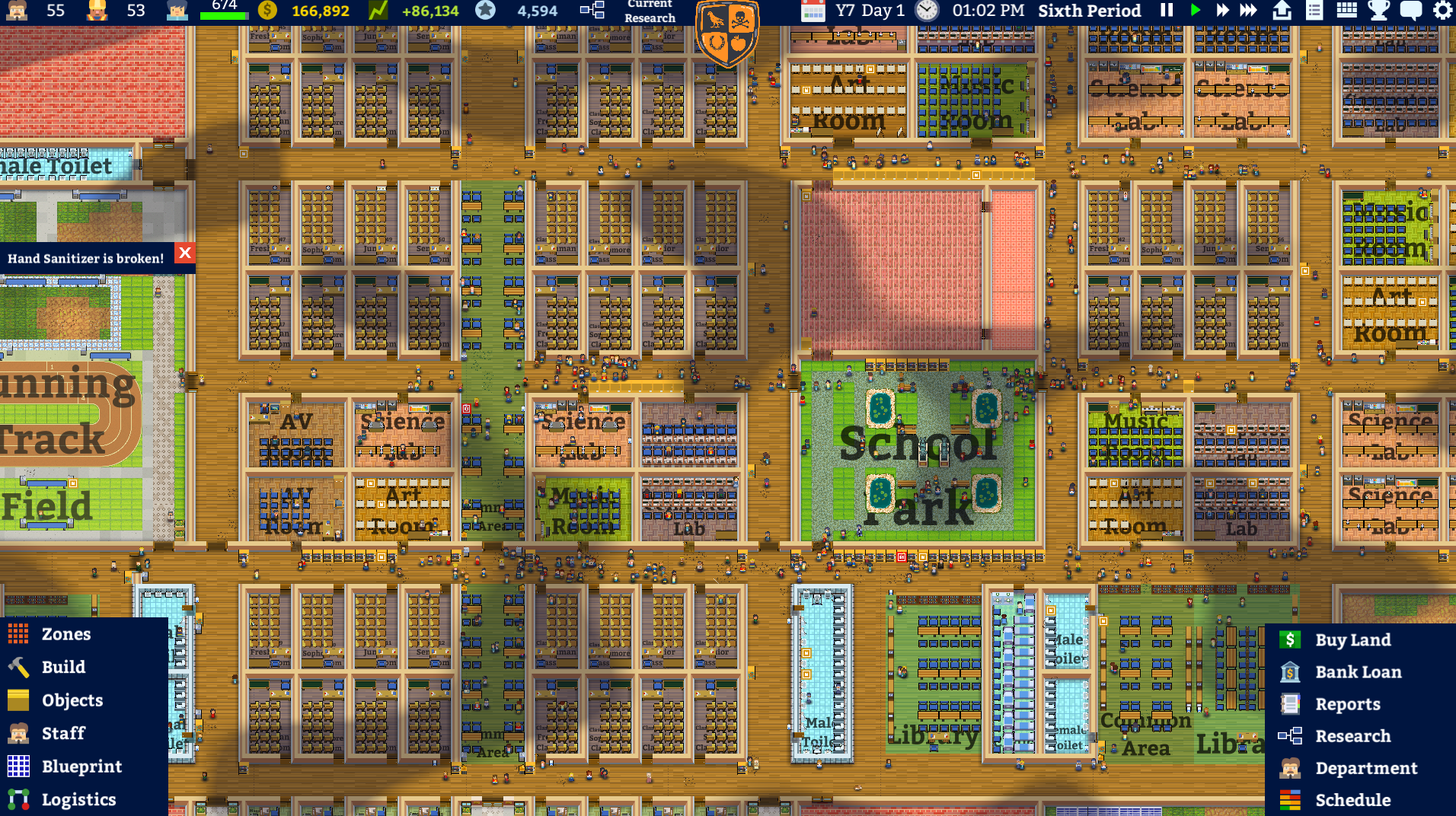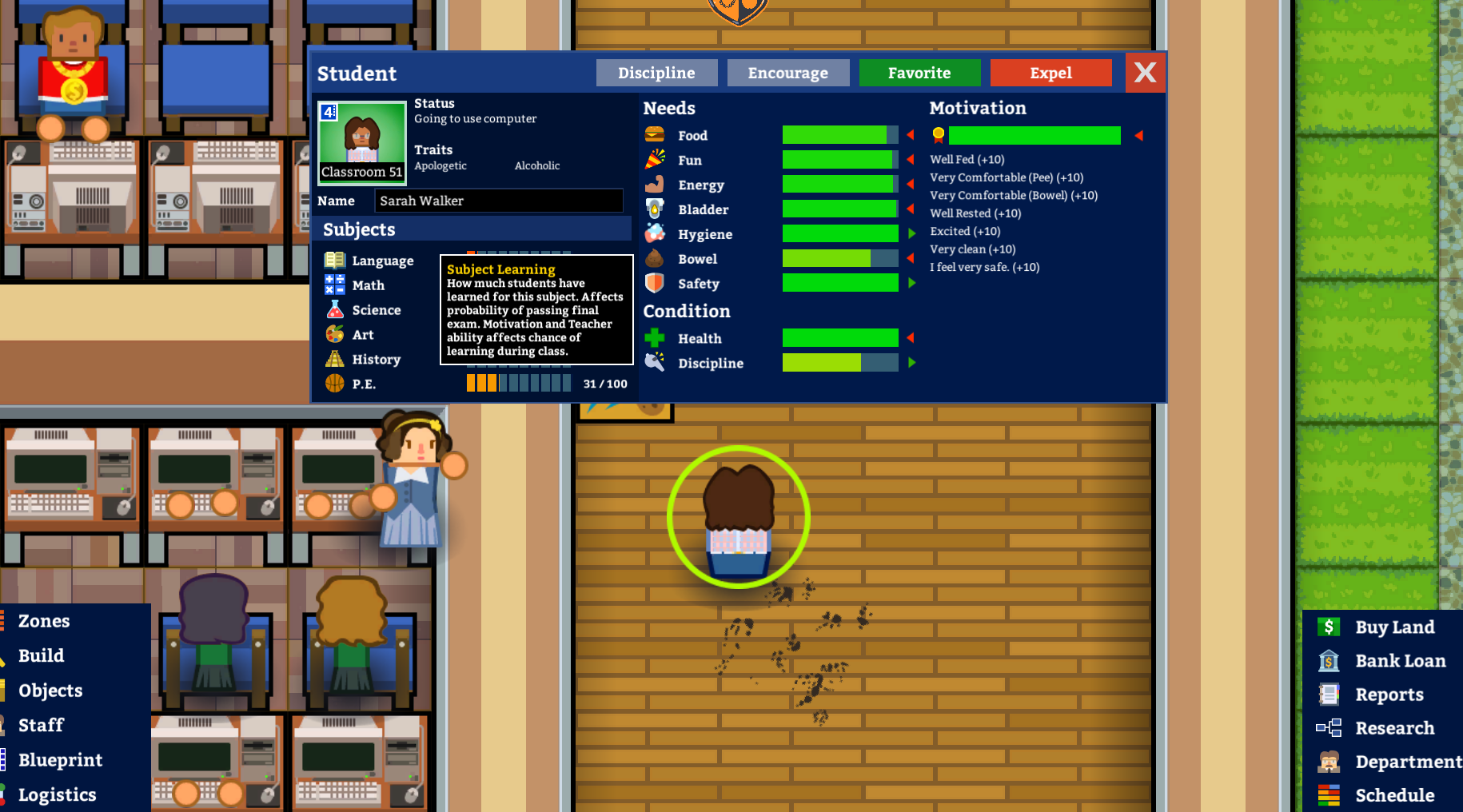Academia: School Simulator
In Academia: School Simulator, the player takes the role of the principal of a school, and manages the schools affairs. Principal responsibilities include building classrooms, and the different facilities required for the school to thrive.
Academia: School Simulator, our second project at Squeaky Wheel Studio, was inspired by tycoon and ‘architect’ games. The team decided on making a school simulator since the topic was largely unexplored by other games, and had a casual theme that is easily accessible to a lot of players. The game has been well received, and has a very positive rating on Steam as of the moment of writing. During the course of the project’s lifetime the team has been fortunate enough to showcase it at the Tokyo Game Show, Kyoto Bitsummit, Busan Indie Connect, and Level Up Kuala Lumpur game conventions. The game is now available on: Steam , Humble Bundle .
Initial Design Process
I started designing the game by playing similar games, and doing research about how schools operated. I already had a feeling that I wanted a student’s well-being to affect their learning. Students in turn will be affected by different factors that the player needed to manage.
These factors are the student’s needs(food,fun, etc.). The general idea was to show that learning is not as straightforward as it seemed. In order for students to learn better, schools have to provide much more than classrooms and learning materials. If the player didn’t manage needs well, then their student’s are less motivated to learn. This was the core of the game, and all other systems would revolve around it.
Each student has several stats that the player must take care of so that students can study well.
Designing Game Mechanics
To design the game economy I used Machinations. Machinations is a game economy design tool(and visual design language), and explained in detail in the book Mechanics: Advanced Game Design.
Sometimes I use the Machinations language when thinking about game mechanics.
The economy of the game follows a main feedback loop:
Buildings/Research--->Needs ---> Motivation ---> Learning --->School Evaluation---> Rewards
At the start of the game, the player has a small amount of funds to build facilities and spend on research. Facilities (and their placement) affect student needs which determine how motivated students are to learn. At the end of the year students take exams, and their performance will affect the school’s evaluation. The school’s evaluation will then determine how much funds the school will have in the next year.(and the cycle goes on)
Other smaller systems in the game with their own shorter feedback loops will affect the main feedback loop. For example, students can get sick in the game and make them miss classes directly affecting learning without going through needs first.
Players can build facilities like the School Park where students can relax after a tiring class.
Scenario and Event Design
I designed some of the events(most were designed by my teammate Ryan), and the scenarios in the game. These tasks mostly consisted of doing research, watching videos,reading academic papers and articles.
Even at the start of working on the scenarios I was intent on educating players about the different problems tackled by schools around the world. Although the scenarios can’t fully do justice to these real world issues I’m pretty proud of them.
My general process for designing scenarios are:
Research. Get inspiration from various sources.
Identify interesting problems that can be explained through existing game mechanics.
Identify mechanics which will be the ‘focus’ of the scenario.
Design the map, and input necessary information in our custom made scenario editor.
Playtest and get feedback from the team.
Iterate.
Regarding playtesting, since we only did playtesting within the team, I took into account my team’s skill in playing the game. I prioritized feedback regarding difficulty from weaker players, since I wanted to make sure that the scenarios can be completed.







